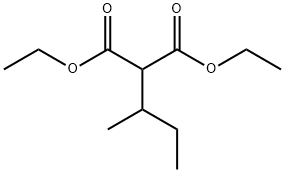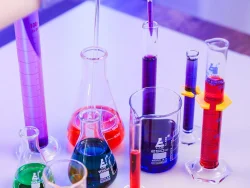Ethyl Hexanoate
Synonym(s):Caproic acid ethyl ester;Ethyl caproate
- CAS NO.:123-66-0
- Empirical Formula: C8H16O2
- Molecular Weight: 144.21
- MDL number: MFCD00009511
- EINECS: 204-640-3
- SAFETY DATA SHEET (SDS)
- Update Date: 2025-12-17 09:49:52

What is Ethyl Hexanoate?
Chemical properties
CLEAR COLOURLESS LIQUID
Chemical properties
Ethyl Hexanoate is a colorless liquid with a strong fruity odor, reminiscent of pineapples. It occurs in many fruits and is used in small amounts for floral, fruity notes in perfume compositions and in larger quantities in fruit flavors.
Chemical properties
Ethyl hexanoate has a powerful, fruity odor with a pineapple–banana note. It has been also reported to have a winy odor.
Occurrence
Reported found in strawberry, rum, bourbon, cocoa, kiwi fruit, black currant, apple, orange and grapefruit juice, guava, Vitis vinifera, pineapple, strawberry jam, clove bud, cheeses, cognac, whiskies, grape wines, passion fruit juice, mango, fruit brandies, figs, corn oil, mountain papaya, pawpaw and mastic gum leaf oil.
The Uses of Ethyl Hexanoate
Ethyl hexanoate may be used as an analytical reference standard for the determination of the analyte in wine and beer samples by chromatography based techniques.
The Uses of Ethyl Hexanoate
manufacture of artificial fruit flavors.
The Uses of Ethyl Hexanoate
Ethyl Caproate is used in the synthesis of novel EP2/EP4 dual agonist of γ-lactam prostaglandin E1 analogs. Also used as a chemical reagent in the synthesis of PPARα antagonists in the treatment of metabolic diseases.
Definition
ChEBI: A fatty acid ethyl ester obtained by the formal condensation of hexanoic acid with ethanol.
Preparation
By esterification of caproic acid with ethyl alcohol in the presence of concentrated H2SO4 or HCl
Aroma threshold values
Detection: 0.3 to 5 ppb
Taste threshold values
Taste characteristics at 10 ppm: fruity and waxy with a tropical nuance.
Synthesis Reference(s)
Journal of the American Chemical Society, 90, p. 818, 1968 DOI: 10.1021/ja01005a064
Synthetic Communications, 14, p. 77, 1984 DOI: 10.1080/00397918408060867
Synthesis, p. 929, 1978 DOI: 10.1055/s-1978-24945
General Description
Ethyl hexanoate is one of the odorants contributing to the typical guava aroma. It also contributes to the fresh strawberry aroma.
Safety Profile
A skin irritant. Flammable liquid when exposed to heat or flame; can react with oxidzing materials. When heated to decomposition it emits acrid smoke and irritating fumes. To fight fire, use CO2, foam, dry chemical. See also ESTERS.
Carcinogenicity
Not listed by ACGIH, California Proposition 65, IARC, NTP, or OSHA.
Metabolism
Aliphatic esters, including ethyl caproate, are thought to be readily hydrolysed to the corresponding alcohol and acid, which are then further metabolized (Fassett, 1963). Ethyl caproate administered orally to rats produced a uniform ketonuria and it was considered probable that caproic acid was broken down chiefly by ?-oxidation (Deuel, Hallman, Butts & Murray, 1936). When 2 g ethyl caproate dissolved in aqueous ethanol was fed directly into the rumen of a cow, 0.003°/ was transferred to the milk, reaching a maximum level of 60 /fg/litre after 2-4 hr (Honkanen, Karvonen & Virtanen, 1964). The energy from ethyl caproate was 52% available when the ester was fed to four chicks at a level of 5% in the diet (Yoshida et al. 1970).
Solubility in organics
Soluble in oils and alcohol. Poorly soluble in Ropylene glycol, insoluble in Glycerin.
Properties of Ethyl Hexanoate
| Melting point: | -67°C |
| Boiling point: | 168 °C (lit.) |
| Density | 0.869 g/mL at 25 °C (lit.) |
| vapor density | 5 (vs air) |
| vapor pressure | 4hPa at 25℃ |
| FEMA | 2439 | ETHYL HEXANOATE |
| refractive index | n |
| Flash point: | 121 °F |
| storage temp. | Flammables area |
| solubility | 0.63g/l |
| form | Liquid |
| color | Clear colorless |
| Odor | at 1.00 % in dipropylene glycol. sweet fruity pineapple waxy green banana |
| explosive limit | 0.9%(V) |
| Water Solubility | INSOLUBLE |
| Merck | 14,3777 |
| JECFA Number | 31 |
| BRN | 1701293 |
| Dielectric constant | 4.5700000000000003 |
| CAS DataBase Reference | 123-66-0(CAS DataBase Reference) |
| NIST Chemistry Reference | Hexanoic acid, ethyl ester(123-66-0) |
| EPA Substance Registry System | Ethyl hexanoate (123-66-0) |
Safety information for Ethyl Hexanoate
| Signal word | Warning |
| Pictogram(s) |
 Flame Flammables GHS02 |
| GHS Hazard Statements |
H226:Flammable liquids |
| Precautionary Statement Codes |
P210:Keep away from heat/sparks/open flames/hot surfaces. — No smoking. P370+P378:In case of fire: Use … for extinction. |
Computed Descriptors for Ethyl Hexanoate
| InChIKey | SHZIWNPUGXLXDT-UHFFFAOYSA-N |
New Products
4,4-Difluoropiperidine hydrochloride tert-butyl 9-methoxy-3-azaspiro[5.5]undecane-3-carboxylate Indole Methyl Resin N-Isopropylurea N,N-Dicyclohexylcarbodiimide(DCC) MELDRUMS ACID 5-METHYLISOXAZOLE-4-CARBOXYLIC ACID Magnessium Bis glycinate Zinc ascorbate 1-bromo-2-butyne 2-acetamidophenol 9(10H)-anthracenone Erythrosin B, 4-Piperidinopiperidine 2-((4-morpholinophenylamino) (methylthio) methylene) malononitrile 2,4-dihydroxybenzaldehyde 3-(4-morpholinophenylamino)-5-amino-1H-pyrazole-4-carbonitrile Methyl 2-methylquinoline-6-carboxylate 2,6-dichloro-4-nitropyridine 4-Bromo-2-chlorobenzonitrile 2-(benzylamino)acetic acid hydrochloride 4-(tert-Butoxycarbonylamino)but- 2-ynoic acid 3,4-dihydro-2H-benzo[b][1,4]dioxepine 1-Phenyl-1-cycloprppanecarboxylicacidRelated products of tetrahydrofuran








You may like
-
 123-66-0 99%View Details
123-66-0 99%View Details
123-66-0 -
 Ethyl hexanoate 98%View Details
Ethyl hexanoate 98%View Details
123-66-0 -
 Ethyl caproate CAS 123-66-0View Details
Ethyl caproate CAS 123-66-0View Details
123-66-0 -
 Ethyl Hexanoate CAS 123-66-0View Details
Ethyl Hexanoate CAS 123-66-0View Details
123-66-0 -
 Ethyl hexanoate CAS 123-66-0View Details
Ethyl hexanoate CAS 123-66-0View Details
123-66-0 -
 Ethyl Caproate CAS 123-66-0View Details
Ethyl Caproate CAS 123-66-0View Details
123-66-0 -
 Ethyl Hexanoate (123-66-0)View Details
Ethyl Hexanoate (123-66-0)View Details
123-66-0 -
 Ethyl Caproate CAS: 123-66-0View Details
Ethyl Caproate CAS: 123-66-0View Details
123-66-0
